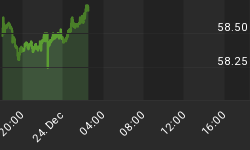The Number and Capacity of Operable Petroleum Refineries for the States of Texas and Louisiana as of January 1, 2005:
Louisiana | |
Total Refineries | 17 |
Operating Refineries | 17 |
Refineries Output | 2,772,723 |
Texas | |
Total Refineries | 26 |
Operating Refineries | 25 |
Refineries Output | 4,628,491 |
Total Output TX/LA | 7,401,214 |
Total Output USA | 17,124,870 |
TX/LA % of USA | 43.22% |
Capacity has increased markedly from 2003 – 2005 for the PAD III Zone which Texas and Louisiana output is reported.
Cokers | Catalytic Crackers | Hydrocrackers | |
2003 | 1,133,340 | 2,848,858 | 765,069 |
2004 | 1,205,740 | 2,911,145 | 729,210 |
2005 | 1,228,629 | 2,921,798 | 720,099 |
Capacity has increased 15.96% in during the 24 calendar months.
2005's hurricane season to date has effectively removed 26% of the Nation's refinery capacity according to the Department of Energy (DOE).
Using the IEA Data above; 444 million gallons of gasoline per day has been removed from the market since last Thursday.
Reports as to the damage to refineries and other infrastructure, such as pipelines and rigs will take a week to ten days to asses according the DOE.
A true energy crisis is on the horizon.
Persistent fuel shortages and rising gas prices will certainly have a considerable effect upon the economy. How great a magnitude will depend on the speed with which both onshore and offshore petro-infrastructure is brought back up and begins producing again.
Consumers confidence will be the key to avoid a panic, so I am looking for the Federal Reserve to continue precisely what they have done, which is provide liquidity for the broad markets through widespread intervention.
Federal Reserve aggregate operations are up 40% in aggregate over the past 45 days.
Another compounding moral hazard serves to mask fact and maintain an illusion at odds with the Americans realities.
Things have clearly gone very wrong.
Poking research notes on Long Term Capital Management; I was struck by a statement made directly from the Bank of International Settlements (BIS) in analyzing the evidence of the data after the resolution of the LTCM as it is rational fully expect similar behavior directed towards the multitude of crisis's we face.
The BIS sums up the empirical results in its conclusions:
"Ultimately, these findings cannot lead one to conclude whether the Federal Reserve should have intervened in the way in which it did because the benefits and costs of Fed action are neither measured in their entirety nor weighted by an appropriate social welfare function."
"Nevertheless, the results suggest that the benefits of Fed intervention may have been lower and the costs higher than perceived at the time."
For a group of Economists to make this subjective of an observation, a value judgment, based upon the compounding moral hazards observed, you know the Federal Reserve made a tremendous blunder.
The evolution of the 'Repo Hazard' was heavily tested during Long Term Capital Management crisis and elevated as Enron began to implode into insolvency.
What had been a vector for managing Federal Funds after the fact; REPO's became the vehicle for replacing Reserve Requirements shortfalls.
The Federal Reserve not only compounded their mistake, they created the ultimate moral hazard in suggesting the "To Big to Fail" mantra.
Enron's insolvency presented fundamentally different challenges than LTCM and its failure had minimal effect on broad financial markets. Liquidity in energy markets and communications bandwidth trading collapsed after Enron's bankruptcy filing.
The LTCM crisis was far more severe. LTCM's insolvency was solely driven by escalating losses in their derivatives positions. Enron's insolvency was driven by unrelenting and mounting losses in its core non-financial businesses sheltered from the light of day through massive accounting fraud. Its derivatives trading desk was its only profitable operation. Enron's derivatives trading business accounted for the majority of its income. The Derivatives Desk was ultimately sold to UBS Warburg in order to minimize the disruption to OTC markets.
The Federal Reserve's recent actions to contain risks and increase liquidity indicate a marked change in their continued egregious behavior.
Each passing day feels as though we've cheated reality once again, only to increase the risks for tomorrow. How many Enron's, how many LTCM's are being covered up, propped up with money via a keystroke.
This is no way to live, it's cheating.
Perpetuating fraud, moral decay and apathy, go hand in hand with some very dark chapters in human history.















